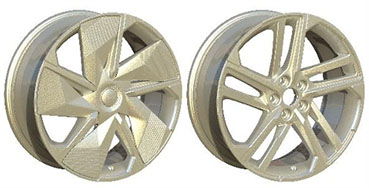In the domestic automotive market, the development of new energy vehicles is highly likely to replicate the rise of domestic smartphones. In 2022, the sales of new energy vehicles reached 6.887 million, of which 5.365 million were pure electric vehicles, a year-on-year increase of 81.6%. The total sales of automobiles in the same year were 26.864 million units, with new energy accounting for approximately 25.6%, with pure electric vehicles accounting for approximately 20%. At the same time, we have noticed that starting from the second half of 2022, for passenger car sales rankings, whether it is sedans or SUVs, nearly half of the top ten sales models are new energy vehicles. There are also some factors that constrain the development of new energy vehicles, especially pure electric vehicles, such as range capability. In order to improve the endurance, various manufacturers have come up with many ways, mainly by increasing battery capacity, reducing vehicle wind resistance, and improving charging and swapping efficiency. As an important spring-loaded component, the weight and shape of the wheels have a significant impact on the endurance of pure electric vehicles.
Under the trend of new energy and energy conservation, aluminum alloy wheels have become the primary choice for automotive wheels. In response to the current transition from fuel vehicles to new energy vehicles, there are two new changes in wheel hub design: first, lighter weight requirements, and second, smaller wind resistance, which requires a smaller window area and wider spokes.
For aluminum alloy wheels, most of them are cast using a low-pressure casting+T6 heat treatment process. Introduce dry air above the sealed furnace and apply it to the surface of the liquid aluminum alloy, creating a certain pressure difference. Under the pressure difference, the alloy liquid first fills the riser and then fills the mold cavity. After the filling is completed, the alloy liquid solidifies sequentially from top to bottom under the action of pressure and mold cooling. Finally, release the pressure and allow the alloy liquid that has not yet solidified in the riser and runner to return to the insulation furnace by its own weight before lifting the mold to remove the casting.
Automotive wheels assembled for new energy vehicles. The main feature of this wheel is that the spokes are wide and the ventilation hole area is narrow. At the same time, in order to ensure the lightweight of the wheels, the thickness of the spokes will be minimized as much as possible during the design process. Low pressure casting requires the wheels to solidify sequentially from the inner rim to the core. If the thickness of the middle spokes is not sufficient, it is highly likely to solidify first, causing the wheel rim shrinkage channel to close prematurely, resulting in dense pinholes or shrinkage porosity. Another difficulty comes from the need to polish the front of the wheels after spraying. Due to the wide spokes, the air hole defects on the entire front of the wheel are exposed after painting, which cannot be covered up.
Summarize
In the current transition from fuel vehicles to electric vehicles, not only is there increasing competition pressure among car companies, but the parts industry is also facing challenges Faced with reshuffling. Seemingly stable wheel manufacturing companies also need to adapt to changes in the current environment. With the continuous increase in the share of new energy vehicles, we must adapt to the changing characteristics of pure electric vehicle wheel shapes and adjust traditional casting processes accordingly. Next, we will focus on improving the casting efficiency of the wheels and adding bottom mold water cooling technology. Due to the fact that both wide and narrow strips are prone to premature solidification, we are also cautious about this and can only explore it cautiously.

